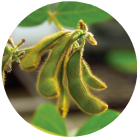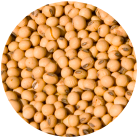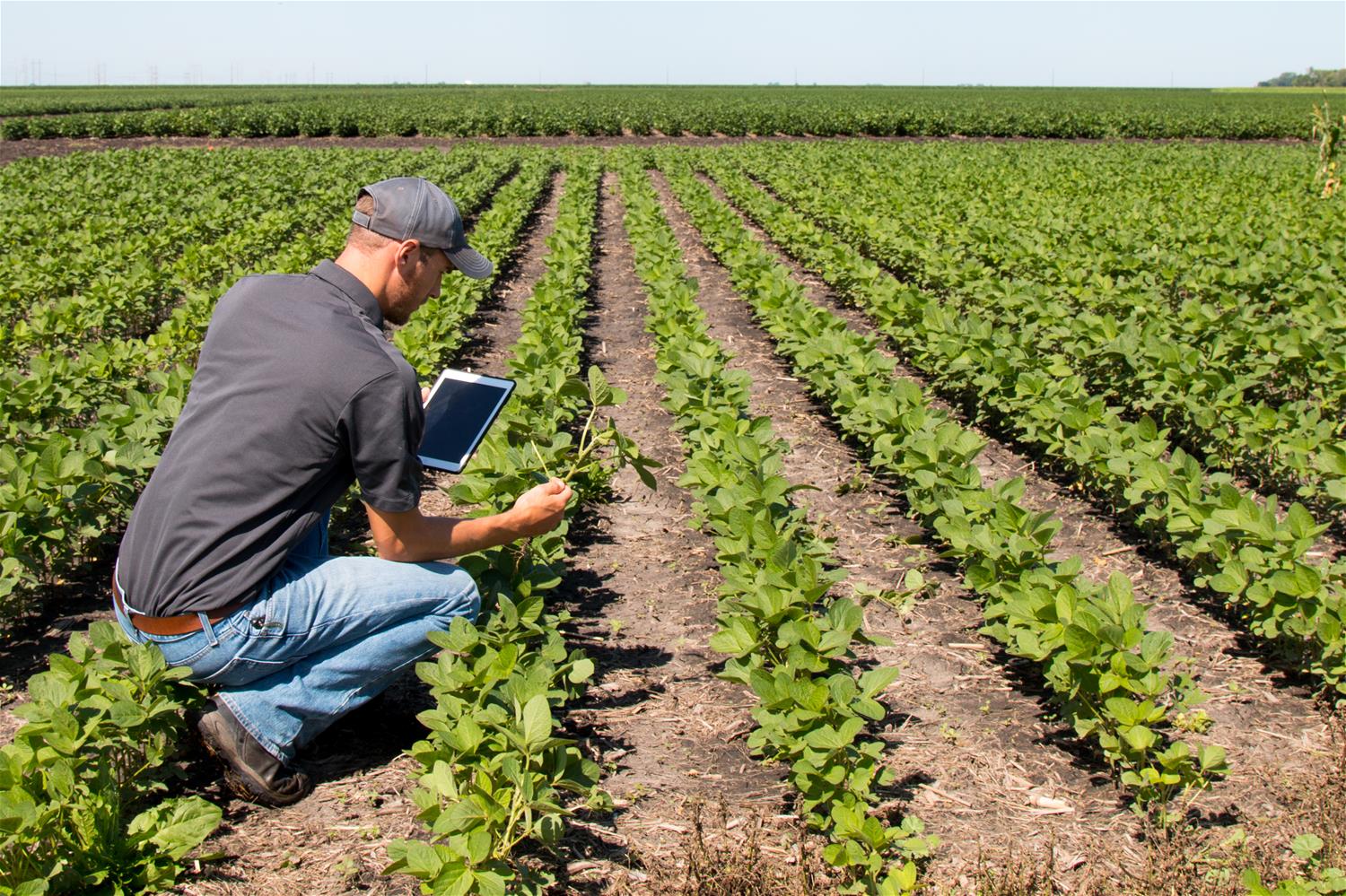U.S. soybean farmers work tirelessly to protect and conserve the land. They have adopted a range of farming practices to decrease carbon emissions and support their ongoing efforts toward soy sustainability.
Sustainable Soybean Production
Soybean sustainability is a priority to U.S. soybean farmers. As stewards of the land, farmers follow sustainable soy farming practices such as crop rotation, reduced-till or no-till, water and nutrient management, precision farming technology and cover crops. These techniques help farmers improve efficiencies, yield more crops, and produce sustainable soy.
Crop rotation moves crops from different fields during different years to reduce the burden on those fields. Reduced tillage is a practice where farmers “till” or dig up the land less, or not at all, before or after harvesting crops. Nutrient management uses proper levels of fertilizers or amendments to keep the soil and plants thriving. Precision farming is an approach to farm management that uses technology to ensure crops and soil receive what they need at the right time. Cover crops are planted purposefully to cover soil rather than be harvested; they help manage erosion and maintain soil quality. These practices help to:
Soybeans are certified sustainable,
contributing to a cleaner label and lower carbon footprint.




By leveraging U.S. grown soybeans’ shorter supply chain, the food industry reduces its carbon footprint and transportation costs, which helps keep soy sustainable.
80 MILLION
acres of U.S. soybeans means that sustainable soy products, like soy protein and soybean oil, are always readily available to meet food company ingredient needs.
4X MORE
refining facilities for U.S. grown conventional and high oleic soybean oil, compared to other oilseed processing facilities.
Carbon Sequestration to Benefit the Environment
U.S. soybean farmers are committed to employing new sustainable production practices to continuously advance sustainability efforts.
Soybean farmers have reduced energy usage per bushel by 35% since 1980. Soil on farms across the U.S. stores 100 times more carbon than the U.S. emits each year, making them part of the solution to reduce the impact farming has on the environment.
Soy Sustainability Commitment
USB and U.S. Soy are actively targeting efficiency goals for sustainable development, where farmers’ positive contributions can make the biggest difference at the farm and through our value chain. By 2025, U.S. soybean farmers aim to:
- Reduce land use impact by 10%.
- Reduce soil erosion an additional 25%.
- Increase energy use efficiency by 10%.
- And reduce total greenhouse gas emissions by 10%.
As of 2015, USB and U.S. Soy have made considerable progress towards these performance goals.
- The land efficiency goal was already exceeded; however, the industry continues to improve.
- USB and U.S. Soy are about halfway to the soil erosion goal and have exceeded energy efficiency goals.
- For greenhouse gas emissions, great progress has been made in efficiency and the industry is still working towards the total impact goal.
Discover U.S. Soybean Farm Sustainability in 360°
Learn about soybean sustainability and the practices that put sustainable soybean production at the forefront of the farming industry.
Take in this View
Virtually tour U.S. soybean grower Nancy Kavazanjian’s family farm.
Learn about soybean sustainability and the practices that put sustainable soybean production at the forefront of the farming industry.
Discover more about soybean farming and the innovative technology and practices U.S. soybean farmers use to produce a more sustainable soybean. Ask questions, find soy recipes and explore health and nutrition resources at Soy Connection.

